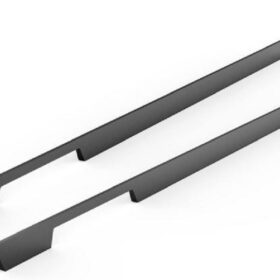The Role of Kitchen Furniture Handles in Functional Design
In the realm of interior design, every element plays a crucial role in enhancing the aesthetics and functionality of a space. Kitchen furniture handles, while often overlooked, are essential components that significantly contribute to both aspects. This article explores the multifaceted role of kitchen furniture handles in functional design, highlighting their impact on ergonomics, accessibility, and overall convenience.
Ergonomic Considerations
Comfortable Grip: Kitchen handles should provide a comfortable and secure grip, preventing discomfort or strain during prolonged use. Ergonomic handles are designed to fit the contours of the hand, reducing muscle fatigue and ensuring ease of operation. They come in various shapes and materials, such as curved, T-shaped, and non-slip handles, to accommodate different grip preferences and hand sizes.
Effortless Opening and Closing: The handles should facilitate effortless opening and closing of drawers and cabinets. Properly designed handles leverage the principles of leverage to minimize the force required to operate them. Soft-close mechanisms integrated into the handles ensure a gentle and quiet closure, preventing slamming and unwanted noise.
Accessibility and Inclusivity
Universal Design: Kitchen handles play a vital role in creating accessible and inclusive kitchens. Universal design principles dictate that spaces should be usable by people of all abilities, including individuals with disabilities or reduced mobility. Handles that are easy to grip and require minimal force to operate make kitchens more accessible to users with limited dexterity or strength.
Height Adjustment: Adjustable handles allow for customization based on the needs of different users. For taller individuals, higher handles provide better leverage and reduce the need to bend down. Conversely, for shorter users, lower handles offer improved accessibility. By accommodating diverse body types, height-adjustable handles enhance the functionality of kitchens for everyone.
Convenience and Efficiency
Organization and Accessibility: Handles provide a convenient and accessible way to organize and retrieve items from drawers and cabinets. By providing a designated grip point, handles allow users to quickly locate and access the contents of their storage units, streamlining kitchen tasks and saving time.
Aesthetic Appeal: Kitchen handles are not merely functional elements; they also contribute to the overall aesthetic appeal of the kitchen. From sleek and modern handles to ornate and decorative ones, there is a wide range of styles to complement different kitchen designs. Finishes such as brushed nickel, chrome, or brass can add a touch of sophistication and enhance the visual impact of the kitchen.
Kitchen furniture handles are often unnoticed yet indispensable components that play a significant role in the functional design of kitchens. They enhance ergonomics, ensure accessibility for all users, and contribute to convenience and efficiency. By carefully considering the shape, material, height, and style of handles, designers can create kitchens that are both beautiful and practical, seamlessly integrating functionality with aesthetics.
-
2024-11-29Top Trends in Modern Kitchen Cabinet Pulls for 2024
-
2024-11-28The Ultimate Guide to Modern Kitchen Cabinet Pulls- Materials, Styles, and Tips
-
2024-11-27Elevate Your Kitchen Design with These Must-Have Modern Cabinet Pulls
-
2024-11-26Sleek and Stylish- The Best Modern Kitchen Cabinet Pulls for a Contemporary Look










